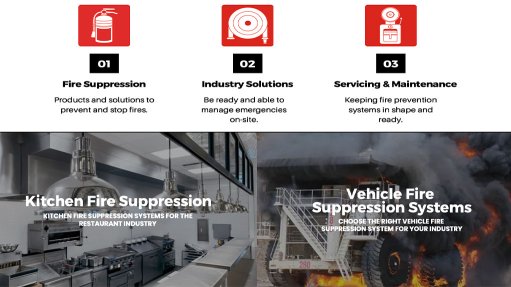Failure to launch
At the turn of this century, there were many predictions about what was going to happen in terms of inventions which would reach 100 years. Among the predictions were quite a number about what would change. For example, it was predicted that we would see the widespread launch of electric planes, the widespread launch of electric cars and the widespread launch of innovative cars, bringing on a new type of car technology.
Quite a few of these predictions were based on the concept of desired hope. Certain types of technology were perceived as being desirable; thus, it was hoped that they would be launched. More recently, it has become very popular to predict that electric transport technology will take over the planet. We have seen the rise in popularity of technology such as electric cars, but I doubt that anybody would claim that these have been an outstanding success; they are energy efficient in how they burn energy, but the simple fact is that they do not burn up the fuel they use and dispose of it. Some of the fuel is burnt up, but a lot of the fuel, or at least the components that support the fuel, remains behind. Put another way, the discharged batteries are still carried by the aircraft or motor car.
The question is: What happens next? Does the ʻdesired hope’ become the hope that will be achieved in a different technology, or does it remain the same as the technology we currently have, but in a different way? An example of this is the transport technology that exists in some First World countries, where nobody has individual transport and virtually everybody uses public transport. This means that any form of private transport is effectively at an end.
To argue for or against this concept, we must look at other, similar technologies. Nobody can argue that all the different types of transport have come to an end; in fact, the different types of transport become more and more diverse. Eighty years ago, we had only two different means of mechanical transport, namely cars and trains; these days, we have a great deal more, but none that really match the predictions.
It would be a mistake to assume that there will not come different transport types of a method and type unknown; to make this mistake would be to assume that we know of all transport types to come. We definitely don’t know this.
If we think about driverless vehicles, one may feel that they are no different from vehicles which have drivers but are just equipped differently. However, the essential difference is that they drive with precision compared with each other; if you have 50 of them following each other, they can do it in such a fashion as to increase the speed of the whole of the group simply because they are all locked together. There is not the inherent delay which is caused by drivers having to synchronise with each other. In addition, they do not have to anticipate erratic vehicle movements, since their movements are all coordinated. In the not-too-distant future, the degree of synchronisation among driverless vehicles will be such that they will become effectively synchronised. This will make them faster, more effective and safer than vehicles with drivers are at present. It will also make them more engineering-free, which may or may not be desirable.
The synchronised driving electric vehicle (SDEV) will be limited to areas which are built-up, but as areas in general develop so too will the SDEVs. It will take some considerable time for them to expand to become ubiquitous. It is quite possible that the world will change. Given the situation between the major powers at present, this seems more likely than we think. If things do change, then there will not be a development of this type but we will keep on with the situation of traffic jams, accidents and policing that we currently have. It will be interesting to find out what happens in the end.
Article Enquiry
Email Article
Save Article
Feedback
To advertise email advertising@creamermedia.co.za or click here
Comments
Press Office
Announcements
What's On
Subscribe to improve your user experience...
Option 1 (equivalent of R125 a month):
Receive a weekly copy of Creamer Media's Engineering News & Mining Weekly magazine
(print copy for those in South Africa and e-magazine for those outside of South Africa)
Receive daily email newsletters
Access to full search results
Access archive of magazine back copies
Access to Projects in Progress
Access to ONE Research Report of your choice in PDF format
Option 2 (equivalent of R375 a month):
All benefits from Option 1
PLUS
Access to Creamer Media's Research Channel Africa for ALL Research Reports, in PDF format, on various industrial and mining sectors
including Electricity; Water; Energy Transition; Hydrogen; Roads, Rail and Ports; Coal; Gold; Platinum; Battery Metals; etc.
Already a subscriber?
Forgotten your password?
Receive weekly copy of Creamer Media's Engineering News & Mining Weekly magazine (print copy for those in South Africa and e-magazine for those outside of South Africa)
➕
Recieve daily email newsletters
➕
Access to full search results
➕
Access archive of magazine back copies
➕
Access to Projects in Progress
➕
Access to ONE Research Report of your choice in PDF format
RESEARCH CHANNEL AFRICA
R4500 (equivalent of R375 a month)
SUBSCRIBEAll benefits from Option 1
➕
Access to Creamer Media's Research Channel Africa for ALL Research Reports on various industrial and mining sectors, in PDF format, including on:
Electricity
➕
Water
➕
Energy Transition
➕
Hydrogen
➕
Roads, Rail and Ports
➕
Coal
➕
Gold
➕
Platinum
➕
Battery Metals
➕
etc.
Receive all benefits from Option 1 or Option 2 delivered to numerous people at your company
➕
Multiple User names and Passwords for simultaneous log-ins
➕
Intranet integration access to all in your organisation
















